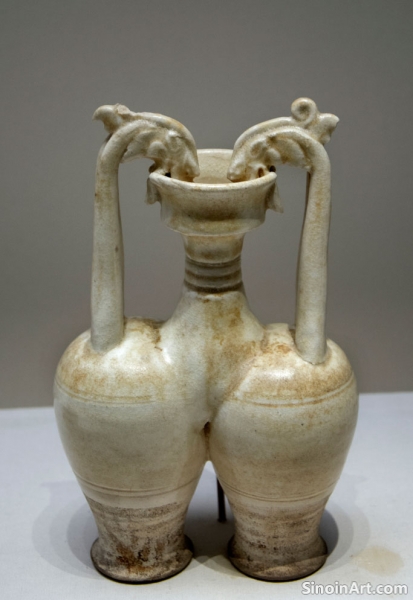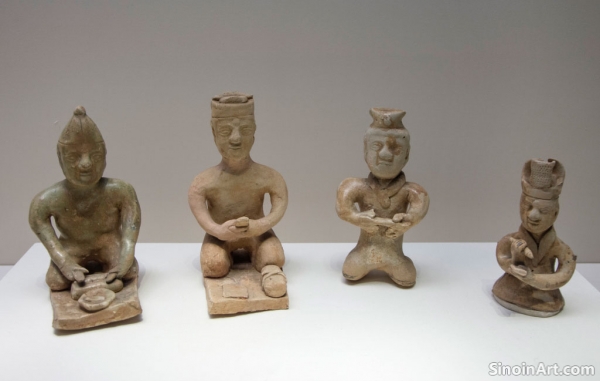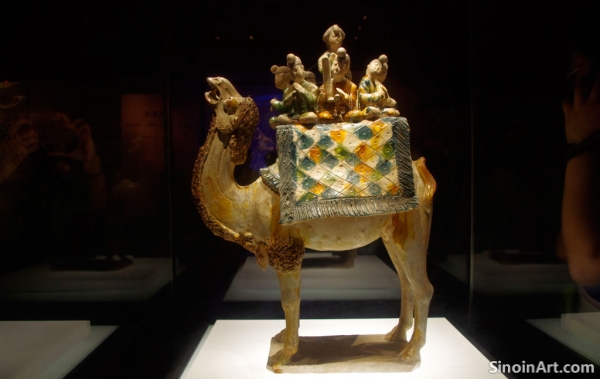Changsha Ware: Bold Designs and Painted Decoration
|
Changsha ware is a distinctive ceramic style from the Tang Dynasty produced in Hunan province, characterized by its bold painted and splashed decorations and its use of underglaze pigments. This ceramic style represents an important counterpoint to the more formal pieces being made in other kilns. Changsha ware is a unique and fascinating aspect of Tang ceramics.  The decorations on Changsha ware often include splashes, spots, and freehand painted designs in colors such as brown, green, and copper-red. These designs often depict floral and abstract patterns. These decorations added a visual dynamism to the pieces.  Changsha ware was often made from stoneware and was produced in a variety of forms, including bowls, dishes, and ewers. These everyday forms show the intended purpose of the pieces. These were meant to be used as part of the daily life of the era.  Changsha ceramics were made for both domestic use and for export, and they have been found in archaeological sites across Asia. This ware was a major part of the Tang export market. Their widespread distribution is a sign of their popularity. The legacy of Changsha ware lies in its bold designs, its freehand decoration, and its demonstration of the range and diversity of Tang ceramic production. These pieces show a spirit of experimentation and creativity. These pieces are a vital part of the overall story of the ceramic tradition. |
Tag : Changsha ware, Tang Dynasty pottery, Chinese ceramics, Painted pottery, Underglaze decoration
Related information
- The Decorative Motifs of Tang Ceramics
- Tang Ceramics and Foreign Trade
- The Enduring Legacy of Tang Dynasty Ceramics
- Yue Ware Celadon: Subtle Elegance in Green
- The Forms of Tang Ceramics: Function and Artistry
The decorative motifs found on Tang Dynasty ceramics are rich and varied, reflecting the diverse cultural influences and artistic trends of the era. These motifs, ranging from simple geometric patterns to complex figural depictions, not only enhance the aesthetic appeal of the wares but also provide insights into Tang beliefs, values, and artistic tastes.
The Tang Dynasty's open trade policies and the prominence of the Silk Road facilitated the widespread distribution of Tang ceramics to foreign lands. These ceramic wares, renowned for their beauty and quality, became valuable commodities in international trade, bringing Tang artistry and craftsmanship to distant corners of the world. The impact of this trade was significant, not only economically but also culturally.
The ceramic art of the Tang Dynasty represents a peak in Chinese ceramic history, leaving an enduring legacy that continues to inspire artists, collectors, and scholars today. The innovative techniques, vibrant colors, and elegant forms of Tang wares established a new standard for ceramic production, influencing subsequent generations of potters both in China and around the world.
Yue ware, a Tang Dynasty celadon, is characterized by subtle green glazes, elegant forms, and fine, smooth bodies, reflecting a quieter aesthetic and influencing later celadon traditions across Asia.
Tang Dynasty ceramics feature diverse forms ranging from elegant ewers and sancai tomb figures to robust storage jars and architectural elements, showcasing the intersection of function, artistry, and the diverse needs of the era.